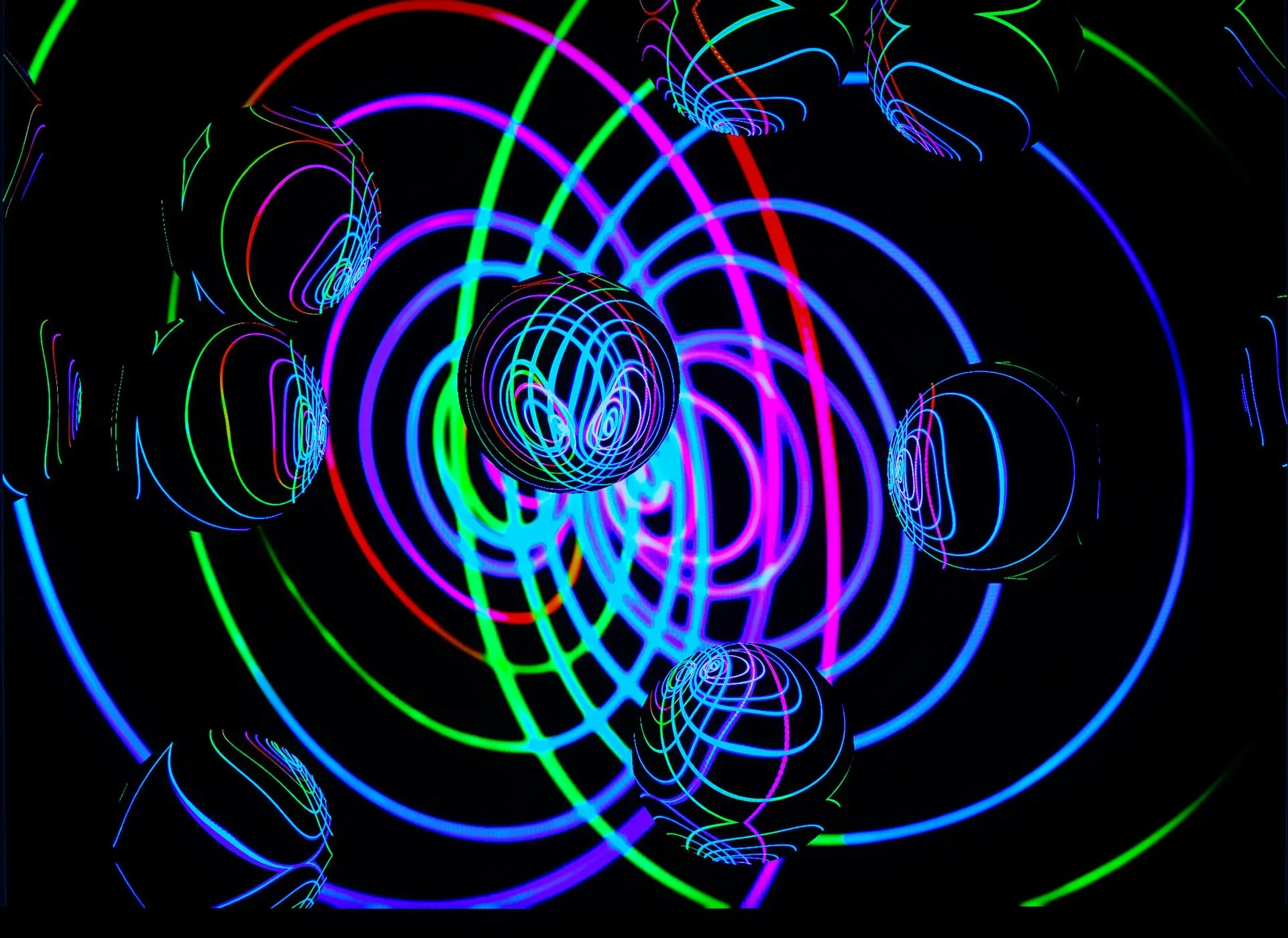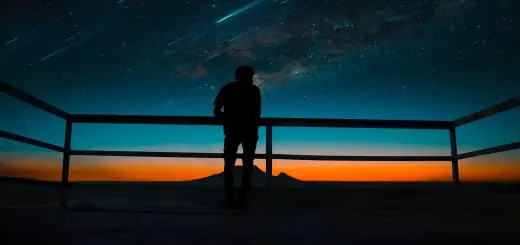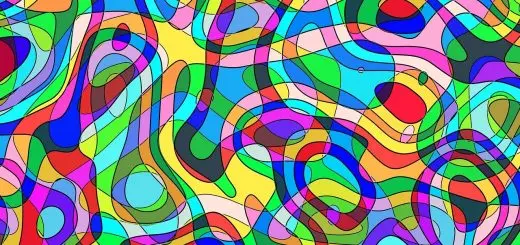How Fashion Trends Evolve Over Time

Looking for more amazing products? Check out our online store and explore our collection here! Happy shopping!
Before diving in, please note: This post is for informational purposes only. If you’d like to know more about how we approach topics, feel free to check out our friendly Disclaimer Page.
Hey there, amazing readers! 
We’re committed to delivering quality posts, and your support (even just sticking around despite the ads) means everything to us. So, bear with us, and thanks for helping us keep the good vibes rolling. Now, on to the fun stuff!
TRANSLATE BUTTON AT THE END OF THE ARTICLE
A Quick Overview
Fashion isn’t just a fleeting whim; it’s a reflection of our culture, our time, and even our emotions.
As I sift through the pages of fashion history, I can’t help but marvel at how trends come and go, often looping back with a twist.
This article dives deep into the intricacies of how fashion evolves, exploring various factors like culture, technology, and personal expression.
Together, we’ll embark on a colorful journey through the changing landscape of style.
Understanding the Roots of Fashion Trends and Their Changes
Fashion trends have a way of morphing and shifting with the tides of society.
It all begins with the basics.
Clothing serves essential purposes, like protection and comfort.
However, as societies evolve, so do the meanings behind our attire.
Back in ancient times, clothing was often dictated by necessity.
The materials available influenced what people wore.
Think about it: wool in colder climates, linen in warmer regions.
As civilizations advanced, fashion began to reflect class status, profession, and even geographical location.
Fast forward to the Renaissance.
Fashion took a dramatic turn with extravagant garments that emphasized wealth and artistry.
Designers started to emerge, and the notion of fashion as a form of self-expression began to blossom.
As the industrial revolution kicked in, mass production made fashion accessible to the masses.
Suddenly, trends could spread like wildfire.
The rise of magazines in the 20th century introduced the concept of fashion icons, creating a new dynamic where trends could be born and die faster than ever.
The 21st century witnessed a digital revolution.
Social media now plays a fundamental role in how trends are created and spread.
A single Instagram post can spark a global phenomenon.
This rapidity has redefined how we perceive fashion, making it an exciting yet volatile landscape.
As we peel back the layers of today’s fashion, we can see the fingerprints of our past.
Each trend is a thread woven into the fabric of history, revealing how our attire continues to evolve in response to the world around us.
The Role of Culture in Influencing Fashion Evolution
Culture shapes our values, beliefs, and lifestyles, which in turn molds fashion trends.
Think about the traditional garments that represent different cultures worldwide.
Each piece tells a story steeped in history and significance.
Take the kimono, for instance.
It’s not just clothing; it’s an emblem of Japanese heritage that reflects aesthetics and societal values.
Similarly, the sari serves as a cultural staple in India, embodying tradition while evolving through contemporary interpretations.
Cultural movements also impact fashion tremendously.
The 1960s counterculture, for example, introduced bold colors and patterns, mirroring the youth’s desire for freedom and change.
The influence of African American culture on fashion, especially through hip-hop and streetwear, has reshaped popular styles.
Fashion is also a canvas for political statements.
Designers often use their platforms to highlight social issues, nudging the industry towards inclusivity and diversity.
Think of the Black Lives Matter movement, which pushed brands to rethink their representation and commitment to social justice.
Even language plays a role.
Certain phrases or slang from subcultures become fashionable, influencing clothing designs.
It’s fascinating how each cultural shift weaves its way into our wardrobe, making us a part of a larger narrative.
Fashion isn’t just about looks; it’s a channel that reflects who we are and the world we inhabit.
As our cultures evolve, so will the fashion trends that accompany them.
How Historical Events Shape Fashion Trends Over Time
The timeline of fashion is often intertwined with significant historical events.
Wars, economic shifts, and technological advancements have all played pivotal roles in the way we dress.
Take World War II, for example.
Fabric shortages forced designers to simplify their creations, leading to the iconic "utility" clothing.
This period emphasized function over extravagance, showcasing the resilience of style in the face of adversity.
The Roaring Twenties also marked a monumental shift.
After the hardships of the First World War, people craved joy and freedom.
Flapper dresses emerged, symbolizing liberation and a break from traditional norms.
Fast forward to the 1980s, marked by the Cold War and economic boom.
The fashion landscape was a reflection of this prosperity, with bold styles, oversized silhouettes, and an extravagant embrace of wealth.
In contemporary times, the COVID-19 pandemic has reshaped fashion trends yet again.
Loungewear surged in popularity as people sought comfort during lockdowns.
This shift indicates how our needs and circumstances directly influence what’s considered fashionable.
Historical events serve as catalysts for change in fashion, pushing it into new territories.
The interplay between our current reality and the garments we choose to wear is a powerful testament to how fashion evolves.
The Impact of Celebrity Influence on Fashion Choices
Let’s face it: we often look to celebrities for style inspiration.
Their influence has been monumental in shaping fashion trends throughout the decades.
Think about the impact of icons like Marilyn Monroe or Audrey Hepburn.
Their distinctive styles defined eras and continue to resonate.
Today, social media has magnified this influence.
When a celebrity posts a picture in a new outfit, it can send the item flying off the shelves within hours.
The "red carpet effect" is real.
Designers often dress celebrities for high-profile events, and the resulting exposure can propel an otherwise unknown brand into the limelight.
I still remember when Meghan Markle wore that stunning white wedding dress designed by Clare Waight Keller.
The impact was immediate, leading to a surge in similar styles and designs inspired by her look.
That’s the power of celebrity influence at work.
Moreover, influencers on platforms like Instagram and TikTok are modern-day trendsetters.
With millions of followers, they can create trends overnight.
Think of how quickly trends like "cottagecore" or "athleisure" took off, largely due to influencer promotion.
Celebrities also challenge fashion norms, advocating for body positivity and diversity.
This shift allows individuals to express themselves in ways that resonate with their values.
At the end of the day, celebrity influence plays a significant role in shaping what we perceive as fashionable.
It’s a reminder that style is often a reflection of our cultural icons and the messages they send.
Technology: The Driving Force Behind Modern Fashion Changes
As we advance into the digital age, technology has become a game changer for the fashion industry.
It’s hard to underestimate the impact of tech on how we shop, design, and wear our clothes.
First, let’s talk about the rise of e-commerce.
Online shopping has made fashion accessible to everyone, regardless of location.
This shift has led to a more diversified market where niche brands can thrive alongside established labels.
Virtual fitting rooms are becoming more commonplace, allowing shoppers to "try" on clothes using augmented reality.
This innovation reduces the hassle of returns and enhances the shopping experience.
Social media platforms have transformed marketing strategies.
Brands can now engage directly with consumers, creating authentic connections.
Trends can spread rapidly through hashtags, challenges, and viral posts, often leaving traditional advertising in the dust.
Additionally, technology is revolutionizing fabric production.
Sustainable practices are gaining ground as designers look to eco-friendly materials and manufacturing techniques.
This shift reflects a broader concern for environmental impact, making fashion both trendy and responsible.
Artificial intelligence is also making waves.
Algorithms analyze consumer behavior to predict fashion trends, ensuring brands can tailor their offerings to meet our cravings before we even realize we want them.
From online shopping to sustainable practices, technology is at the forefront of fashion evolution.
It not only shapes trends but also defines how we interact with them in our daily lives.
The Rise of Sustainable Fashion in Contemporary Trends
As environmental awareness grows, sustainable fashion is becoming a significant aspect of contemporary trends.
Many consumers are now seeking clothing that aligns with their values, prompting brands to adapt.
Sustainability isn’t just a buzzword; it reflects a shift in how we view fashion.
No longer do we see it solely as a means of self-expression; it now carries a responsibility toward our planet.
Brands are increasingly adopting ethical practices, from sourcing materials to production processes.
Think of companies that use recycled fabrics or those that ensure fair labor practices.
These choices resonate with consumers who prioritize conscious consumption.
Second-hand shopping has seen a resurgence, with thrift stores and online resale platforms gaining popularity.
This shift is not just economical; it promotes a more sustainable approach to fashion, encouraging a circular economy where clothing lasts longer.
Moreover, influencers and celebrities are playing a crucial role in this movement.
Many are now advocates for sustainable fashion, showcasing how stylish choices can also be environmentally friendly.
This normalization can lead to broader acceptance and adoption.
Sustainable fashion is more than a trend; it’s a movement pushing for change in an industry long criticized for its environmental impact.
As we evolve, so does our understanding of what it means to dress with intention.
Social Media’s Role in Rapidly Spreading Trends
Social media has fundamentally transformed the landscape of fashion.
Platforms like Instagram, TikTok, and Pinterest serve as vibrant hubs for sharing styles and inspirations.
I remember when I first stumbled upon a TikTok video showcasing a "5-minute outfit." That simple yet effective concept spread like wildfire.
Suddenly, my friends and I were experimenting with quick, creative looks, all inspired by a few seconds of video content.
Influencers and everyday users alike have the power to spark trends.
A casual post can become the next big thing—think of the matching sets or chunky sneakers that became staples because of viral social media moments.
Hashtags have also revolutionized how trends spread.
A single hashtag can connect thousands of people sharing similar styles.
It cultivates a sense of community, making fashion more inclusive and relatable.
Social media also allows for greater interaction between brands and consumers.
We can now engage directly with our favorite labels, providing feedback and influencing product designs.
This dialogue fosters a sense of connection and loyalty.
However, the speed at which trends come and go can be overwhelming.
One day, it’s all about oversized blazers; the next, it’s micro mini skirts.
Keeping up can feel like a fashion race, but it also means there’s always something new to explore.
In essence, social media is a dynamic stage where trends are born, evolve, and sometimes flicker out.
It shapes our understanding of style, making fashion a collaborative and exciting experience.
Vintage Fashion: The Comeback of Timeless Styles
There’s something undeniably charming about vintage fashion.
It’s like finding a hidden gem in a thrift store; it carries stories and history that modern styles often lack.
Vintage trends reflect a nostalgia for past eras, whether it’s the flares of the ’70s or the grunge style of the ’90s.
Each decade has left its mark on fashion, and today’s designers often pull inspiration from these classic looks.
This resurgence isn’t just about aesthetics.
It’s also a reaction to fast fashion’s environmental impact.
Many are opting for vintage pieces as a more sustainable alternative, breathing new life into garments that deserve to be celebrated.
Thrift shops and online resale platforms have made vintage shopping more accessible.
I’m often amazed at the unique finds I uncover—each piece feels like a treasure waiting to be styled.
Vintage fashion also fosters individuality.
In a world where trends can feel homogenized, rocking a vintage outfit sets you apart.
It’s a way to express who you are while honoring the past.
Additionally, vintage fashion has a way of transcending time.
Certain styles, like the little black dress or high-waisted jeans, never truly go out of style.
They evolve, adapt, and return, proving that fashion is cyclical.
In embracing vintage, we celebrate the artistry of past designers while crafting our own unique narratives.
Vintage fashion has solidified its place in the modern wardrobe, reminding us that style is timeless.
Globalization and Its Effect on Fashion Diversity
In our interconnected world, globalization has played a pivotal role in diversifying fashion.
It’s fascinating how styles from one part of the globe can influence trends thousands of miles away.
Take the influence of traditional textiles, such as African kente cloth or Indian block prints.
These beautiful patterns have found their way into mainstream fashion, often with a twist that adds modern flair.
Globalization also facilitates cultural exchange.
Designers now pull inspiration from various traditions, creating a fusion of styles that celebrates diversity.
Think of how streetwear has been influenced by various cultures, resulting in unique, hybrid looks.
However, this cross-pollination isn’t without challenges.
There are ongoing conversations about cultural appropriation versus appreciation.
It’s crucial for designers to honor the origins of their inspirations, ensuring that cultures are respected rather than exploited.
Fashion weeks around the world now showcase designers from diverse backgrounds, amplifying voices that have historically been marginalized.
This representation enriches the industry, making it more vibrant and inclusive.
Moreover, social media enables consumers to explore global fashion trends, breaking down geographical barriers.
We can follow brands from different countries, discovering new styles and perspectives at our fingertips.
In essence, globalization has transformed fashion into a melting pot of influences.
As we embrace diversity, we open ourselves to a world of creativity and innovation.
The Cycle of Fashion: From Fads to Classics and Back
Fashion has a way of coming full circle.
Trends often resurface, reimagined for a new generation.
What once was “out” can become “in” again, creating a fascinating cycle.
Take the example of high-waisted jeans.
They made a splash in the ’80s, faded from view, and then made a triumphant return in the 2010s.
This ebb and flow is a reminder that fashion is more than just seasonal change; it’s a reflection of cultural shifts.
Fads can be short-lived—think of the fidget spinner craze.
While it was all the rage for a moment, it quickly faded.
Classic styles, on the other hand, endure the test of time.
They evolve but remain staples in our wardrobes.
The appeal of retro aesthetics also contributes to this cycle.
Nostalgia plays a powerful role in fashion choices, leading many to seek out styles reminiscent of their childhood or formative years.
Designers often revisit previous decades for inspiration, remixing old ideas with contemporary sensibilities.
This blending creates a sense of familiarity while pushing fashion forward.
I love how these cycles allow us to explore our identities through fashion.
We can draw from the past while remaining current, creating a unique style that speaks to who we are.
Ultimately, the cyclical nature of fashion shows that trends are never truly gone.
They merely hibernate, waiting for the right moment to re-emerge and resonate with a new audience.
How Personal Expression Shapes Individual Fashion Choices
At its core, fashion is about self-expression.
The way we choose to dress tells a story about who we are, our values, and our personality.
It’s an art form that allows us to share parts of ourselves with the world.
Some people use fashion to convey confidence.
Think of a bold outfit that makes you feel unstoppable.
In contrast, others may lean towards comfort, choosing pieces that provide ease and relaxation.
Personal style can also reflect our interests.
For instance, if you love music, you might incorporate elements from your favorite bands into your outfits.
Fashion becomes a canvas for showcasing what matters to us.
Cultural backgrounds influence our choices too.
Traditional garments can serve as a connection to heritage, while contemporary pieces may represent a blend of influences.
This intersection of culture and personal identity creates a rich tapestry of styles.
Social media has made it easier to explore and define our fashion identities.
With platforms like Instagram, we can curate our feeds to reflect our tastes, drawing inspiration from others while staying true to ourselves.
However, the pressure to conform to trends can be overwhelming.
It’s essential to remember that fashion should be fun, not a chore.
I often encourage friends to wear what makes them happy, regardless of what’s “in” at the moment.
Ultimately, personal expression shapes our fashion choices, allowing us to navigate the world on our terms.
Style is a reflection of our individuality, and that’s what makes it so beautiful.
Future Predictions: What’s Next for Fashion Trends?
Looking ahead, the future of fashion is exhilarating and full of possibilities.
As we navigate a rapidly changing world, several trends are likely to shape the industry in the coming years.
Sustainability will continue to dominate conversations.
As consumers demand transparency and ethical practices, brands will need to adapt.
Expect to see more innovations in eco-friendly materials and production techniques.
Technology will also play a significant role.
The rise of virtual fashion shows and augmented reality shopping experiences will change how we interact with brands.
Imagine trying on clothes through your smartphone without stepping foot in a store!
Inclusivity is another trend that’s gaining momentum.
As the industry evolves, expect brands to embrace diversity in body types, skin tones, and gender identities.
Fashion is gradually moving towards a more inclusive landscape, reflecting the beauty of our differences.
Furthermore, the blending of streetwear and high fashion will likely continue.
Designers are increasingly merging these aesthetics, creating pieces that resonate with a broader audience.
This democratization of fashion makes it accessible to everyone.
As we embrace digital platforms, I anticipate a shift in how trends are created and shared.
The power of social media influencers will only grow, shaping styles in real-time.
Virtual fashion may also become a mainstream concept.
As we spend more time online, our avatars could become extensions of our personal style, with consumers opting for digital clothing that reflects their aesthetic.
The future is bright and brimming with potential.
As we navigate this exciting landscape, let’s remain open to new ideas and possibilities that fashion has to offer.
Conclusion
Fashion trends are a fascinating tapestry woven from history, culture, technology, and personal expression.
As we’ve explored, the evolution of fashion is a reflection of our society and the values we hold dear.
From the past’s echoes to the promising future, fashion remains a vibrant means of storytelling.
So next time you slip into your favorite outfit, remember: you’re not just dressing; you’re participating in a rich narrative that spans generations.
How exciting is that!

The Enlightenment Journey is a remarkable collection of writings authored by a distinguished group of experts in the fields of spirituality, new age, and esoteric knowledge.
This anthology features a diverse assembly of well-experienced authors who bring their profound insights and credible perspectives to the forefront.
Each contributor possesses a wealth of knowledge and wisdom, making them authorities in their respective domains.
Together, they offer readers a transformative journey into the realms of spiritual growth, self-discovery, and esoteric enlightenment.
The Enlightenment Journey is a testament to the collective expertise of these luminaries, providing readers with a rich tapestry of ideas and information to illuminate their spiritual path.
Our Diverse Expertise
While our primary focus is on spirituality and esotericism, we are equally passionate about exploring a wide range of other topics and niches 

To ensure we provide the most accurate and valuable insights, we collaborate with trusted experts in their respective domains 
Our blog originally focused on spirituality and metaphysics, but we’ve since expanded to cover a wide range of niches. Don’t worry—we continue to publish a lot of articles on spirituality! Frequently visit our blog to explore our diverse content and stay tuned for more insightful reads.
Hey there, amazing reader! 
Check out our store here and take a peek at some of our featured products below! Thanks for being awesome!











